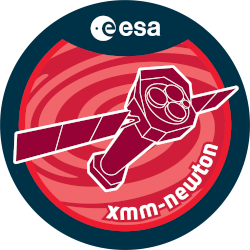

| Proposal ID | 074014 |
| Title | The X-ray emission of the sdO star BD+37 1977 |
| Download Data Associated to the proposal | https://nxsa.esac.esa.int/nxsa-sl/servlet/data-action-aio?obsno=0740140301 |
| DOI | https://doi.org/10.5270/esa-zohp34t |
| Principal Investigator, PI | Mr Nicola La Palombara |
| Abstract | While several hot subdwarf stars have been deeply investigated in the opticaland UV domain, up to very recent times only the sdO stars HD49798 and BD+37 442had been detected at X-rays. Both sources are characterized by comparablespectral and timing properties; in particular, the flux shows a fast periodicmodulation, likely due to wind accretion from the sdO star onto a WD or NScompanion. In the latest months the first systematic search for X-ray emissionfrom a complete flux-limited sample of sdO stars, performed by Chandra, hasprovided a detection also of the sdO star BD+37 1977. Now we propose to observethis star with XMM: our aim is to characterize in detail its spectral X-rayproperties and to investigate if it is intrinsic or due to an accreting compact companion. |
| Publications |
|
| Instrument | EMOS1, EMOS2, EPN, OM, RGS1, RGS2 |
| Temporal Coverage | 2014-04-14T15:00:25Z/2014-04-24T18:40:04Z |
| Version | 17.56_20190403_1200 |
| Mission Description | The European Space Agencys (ESA) X-ray Multi-Mirror Mission (XMM-Newton) was launched by an Ariane 504 on December 10th 1999. XMM-Newton is ESAs second cornerstone of the Horizon 2000 Science Programme. It carries 3 high throughput X-ray telescopes with an unprecedented effective area, and an optical monitor, the first flown on a X-ray observatory. The large collecting area and ability to make long uninterrupted exposures provide highly sensitive observations. Since Earths atmosphere blocks out all X-rays, only a telescope in space can detect and study celestial X-ray sources. The XMM-Newton mission is helping scientists to solve a number of cosmic mysteries, ranging from the enigmatic black holes to the origins of the Universe itself. Observing time on XMM-Newton is being made available to the scientific community, applying for observational periods on a competitive basis. |
| Creator Contact | https://www.cosmos.esa.int/web/xmm-newton/xmm-newton-helpdesk |
| Date Published | 2015-05-16T22:00:00Z |
| Last Update | 2025-08-04 |
| Keywords | "XMM", "hot subdwarf stars", "sdo star bd", "sdo star", "wind accretion", "uv domain", "systematic search", "ns companion", "comparable spectral", "spectral xray properties", "sdo stars", "deeply investigated", "fast periodic modulation", "accreting compact companion", "sdo stars hd49798", "xray emission" |
| Publisher And Registrant | European Space Agency |
| Credit Guidelines | European Space Agency, Mr Nicola La Palombara, 2015, 'The X-ray emission of the sdO star BD+37 1977', 17.56_20190403_1200, European Space Agency, https://doi.org/10.5270/esa-zohp34t |